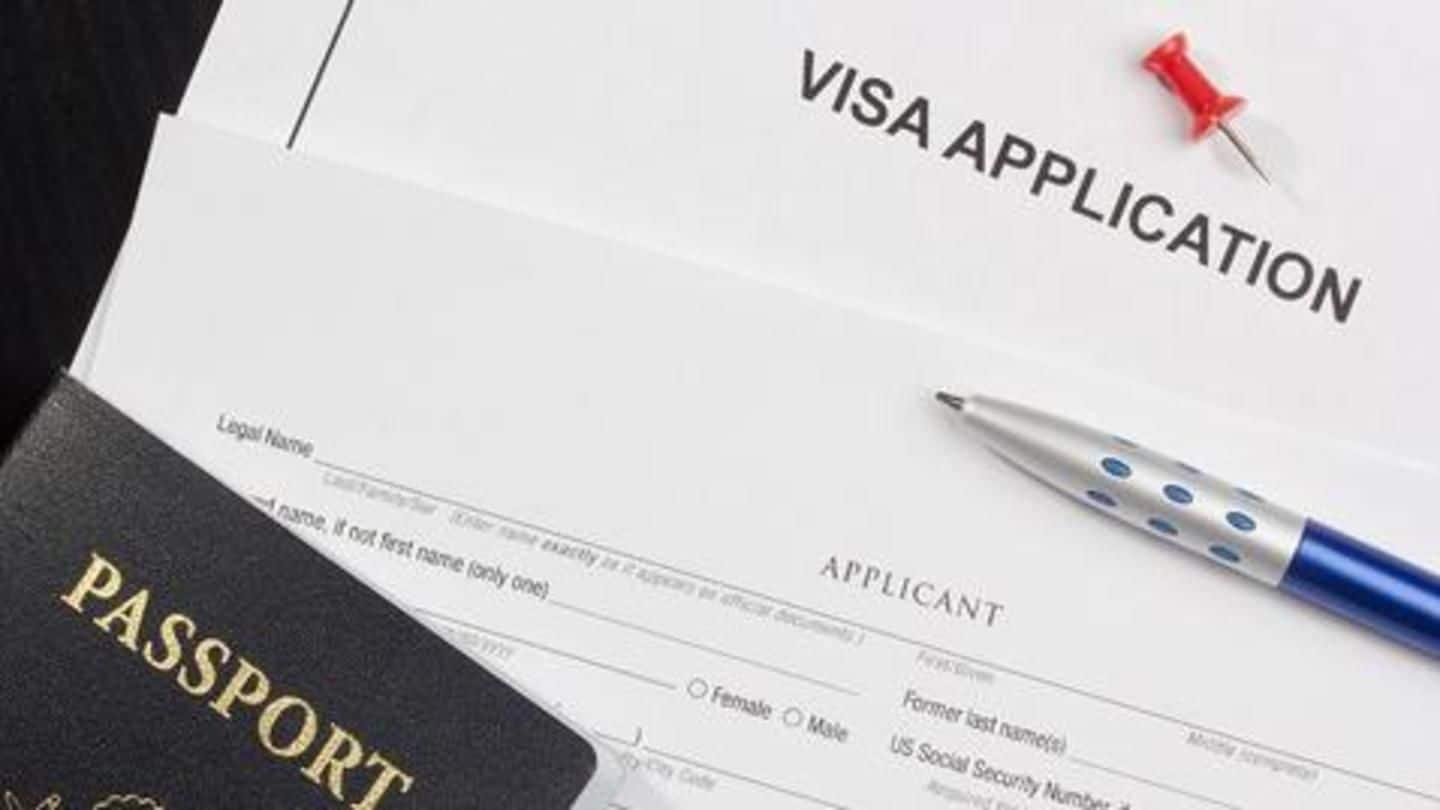
The most common types of US visas for Indians
What's the story
The US is one of the world's most visited countries and anyone wishing to enter it must first obtain a visa.
There are a number of US visas depending on one's purpose of travel. Thus, it is essential to know about the types of visas and their requirements before applying for the same.
Here are the most common US visas for Indian citizens.
US Visas
What are immigrant and non-immigrant visas?
US visas can be broadly divided into two types: Immigrant and Non-Immigrant Visas. Those wishing to permanently relocate to the US can apply for Immigrant Visa while Non-Immigrant Visa is for someone who wants to stay in the US temporarily.
Immigrant visas are again classified into Family-sponsored, Employment-sponsored, and Other (those that do not belong to the first two categories) visas.
Immigrant Visas
About the family-sponsored and employment-sponsored immigrant visas
Those wishing to settle in the US to live with their families (US Citizens) can opt for Family-based Immigrant Visas: Immediate Relative (IR-1, IR-2, IR-3, IR-4, IR-5), Family-Preference (F1, F2, F3, F4) Visas.
Employment-based Immigrant Visas are for those entering US for their career: E1 (priority workers), E2 (professionals holding advanced-degrees/persons of exceptional ability), E3 (skilled workers/professionals/unskilled workers), E4 (special cases), E5 (immigrant investors).
Non-Immigrant Visas
Non-Immigrant Visas for those wishing to stay temporarily
Non-Immigrant Visas (NIVs) are issued to those wishing to be in the US on a temporary basis; applicants must have permanent residence outside the US.
There are numerous NIV types, but Indians are not eligible for some NIVs.
Visitor Visa is the most popular NIV. It has a six-month maximum validity. Categories include Business Visitor (B-1), Tourism Visitor (B-2), or combination of both (B-1/B-2).
Student Visas
Two types of visas for studying in the US
Individuals who want to study in the US must have a Student Visa; there are two Student Visa types: F (Non-Vocational education), M (Vocational education) visas.
F Visas comprise F-1 (for full-time students) apart from F-2 (dependants of F-1 visa holders) and F-3 (Mexican/Canadian students).
M Visas include M-1 (for vocational and technical education) and M-2 (M-1 dependent visa), and M-3 (Mexican/Canadian vocational students).
Work Visas-1
Work Visa is another most popular type of US Visa
To work in the US temporarily, employees must qualify for Work Visa based on the employment purpose.
Individuals holding Bachelor's degree in specific specialties may qualify for H-1B Visa for specialty occupation. Spouses and children (under 21 years) of H-1B Visa holders may receive H-4 visa.
Another work visa is H-3 for trainees who are under training from employers for up to two years.
Work Visas-2
Other types of temporary employment US Visas for Indians
L-1 is another Work Visa for temporary intra-company transferees (must be employees of international companies). Dependents of L-1 visa holders receive L-2 visas.
O Visa for individuals with extraordinary ability/achievement in science, education, arts, business, athletics or extraordinary achievement in motion picture and television production.
Q Visa is for those participating in international cultural exchange programs for training or employment.
Exchange visitors
Exchange visitor visa for non-immigrants to visit US
Those who wish to participate in any exchange visitor programs in the US can apply for the Exchange Visitor (J) Non-Immigration Visa.
Before applying for the visa, candidates must have been accepted and approved by the sponsor of the exchange programs.
Participants of such programs may include students at academic levels, teachers, professors, research scholars, professional trainees, visitors for research purposes, consultation, travel, etc.